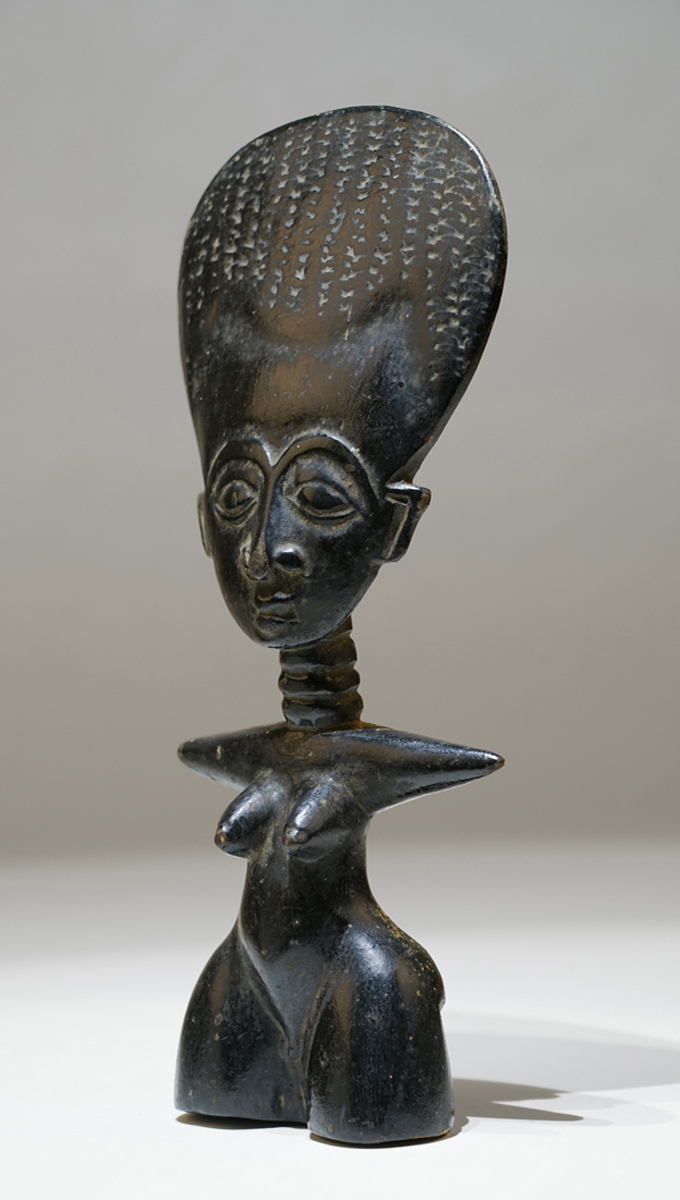 |
 An Ashanti Akuaba fertility puppet in shape of a torso, blackened to greyish, patina;
"Disk-headed akuaba figures remain one of the most recognizable forms in African art. Akua ba are used in a variety of contexts; primarily, however, they are consecrated by priests and carried by women who hope to conceive a child. The flat, disklike head is a strongly exaggerated convention of the Akan ideal of beauty: a high, oval forehead, slightly flattened in actual practice by gentle modeling of an infant's soft cranial bones. The flattened shape of the sculpture also serves a practical purpose, since women carry the figures against their backs wrapped in their skirt, evoking the manner that infants are carried. The rings on the figure's neck are a standard convention for rolls of fat, a sign of beauty, health, and prosperity in Akan culture. The delicate mouth of the figure is small and set low on the face. The small scars just discernible below the eyes of this figure refer to a local medical practice as protection against convulsions. Most akua ba have abstracted horizontal arms and a cylindrical torso with simple indications of the breasts and navel; the torso ends in a base as opposed to human legs. The style of this sculpture is rare among other extant examples of akua ba due to its miniaturized naturalistic body, arms, and legs. Full-bodied figures such as this are believed to be a recent twentieth-century innovation within the akua ba sculptural tradition...etc, etc" Source MET Museum, NY
300 - 400,- Euro
Height: 27 cm
Weight: 160 g
|
 photo: tribalartforum.com/ identification no. DSC00287.jpg
photo: tribalartforum.com/ identification no. DSC00287.jpg |
|